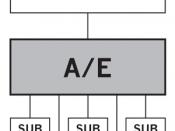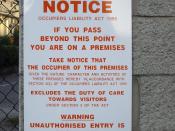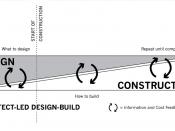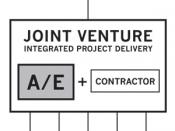Put yourself in Perry WinklerÃÂs shoes. How would you make your decision and what would it be?ArchitectÃÂs liability to the unborn?Mr Perry Winkle an architect is hesitating to accept a prestigious public building offered by Mr Grant Little a property developer. Due to some clauses written into the proposed term of engagement, he is worrying his liabilities to design and construction defects and also restricted to interacting with the end users for design brief.
If I were the architect, I would like to counter propose to the developer with revised employment term and condition, perhaps under his direct employment with project profit sharing.
Before we go further, it is important for us to understand the professionalÃÂs duty of care, risk transfer and site supervision in the building industry practice.
Standard of CareWhether you are an architect or an engineer, all design professional must exercise the standard of care expected by the profession at every stages of the work; starting from preparation of drawings and specifications, tender documentation and process, approval of shop drawings, certify interim payments, and site supervision until completion of works as well as to guard the owner against defects in the construction.
First and foremost Mr Perry Winkle should be aware of his professional skills, responsibilities and liabilities of an architect in design, site investigation, familiar with building code and regulation, and to ensure that the work is carried out as per drawings and specification.
EmploymentThe terms and conditions of an architect's employment are designated in a contract and are governed by general rules of contract law. Ordinarily, the person who employs the architect becomes the owner of the plans, unless the employment contract states otherwise. Customarily, the architect retains the plans after they have been paid for and the builder may possess and use them while constructing the building. (Law encyclopedia)Professional IndemnityThe law requires a professional (defined as anyone who gives expert advice and/or services to another person) to execute their skill and knowledge at an appropriate level expected of that profession. But professionals are only human and mistakes do happen. Any financial loss arising from a mistake or failure by that professional to do so may result in an award in favour of your client. A professional may also be held to be liable for a mistake even though there was no negligence in his work.
Professional indemnity insurance is to covers liability in both tort and contractual issues arising from normal professional activities either by architect or engineer. The purpose of this insurance is to protect the professional from the financial consequences of any claim brought against it as alleged negligent act in the performance of its professional capacity.
This indemnifies the insured (architect or engineer) against claims for compensation fora)breach of professional duty,b)any negligence by way of act, error or omission which include indemnifies professionals for their legal ability to clients & others relying on their advice and services, and also to provides indemnity coverage if a client suffers loss, either materially, financially or physical that is directly attributable to negligent acts of the professional (Curtin study notes)Generally the insurer is required to provide full information with regards to the types of activities to be carried out to ensure adequate coverage exists.
Clerk of workThe clerk of work (often abbreviated CoW) is a person employed by the architect or client to station at construction site. The role is primarily to represent the interests of the client in regard to ensuring the quality of both materials and workmanship are in accordance with the design information such as specification and engineering drawings, in addition to recognized quality standards.
To minimize the poor workmanship and inferior products, the architect should engaged an experience or senior clerk of work to supervise entire construction site, construction methods as well as carry out quality test and inspection and report to the architect directly whenever any deviation arise during construction period.
ConclusionThe architect-engineer can not defend against the owner's claims by using the excuse that he was relying upon the information or work provided to him by an employee or consultant. The architect or engineer who has relied on a consulting specialist, though, may attempt to pass the liability down the line by invoking the indemnity clause of the consultant's contract with him. Nonetheless, from the perspective of the owner who hires him, the design professional's duty remains non-delegable as mentioned by Robert P.W. (2001)Mr Perry Winkle needs not worried if he has no interaction with the building owner with regards to the design brief and criteria. The developer is more aware of building ownerÃÂs requirement and market drive factors. He will be brief and to design accordance to the criteria and programme given to him through the developer.
Clerk of work which is engaged directly under architect will definitely minimize any defects due to poor quality of materials and poor workmanship to ensure works are carried out in accordance to the drawings and specification.
He as an architect should concentrate on the design and planning issues with compliance to statutory requirements. His work and the project must comply with all relevant legislation, codes and requirements of authorities and of utility/service providers, current at the time when the relevant component of the services is being provided by him.
(892 words)List of references:Architect, Law Encyclopedia, viewed on 3 Nov 2007,retrieved from: http/www.answers/topic.comRobert P.W, 2001, Architect-EngineersÃÂ Duty of Care and Liability Issues, viewed on 3 Nov 2007,retrieved from: http/www.mslawyer.com





